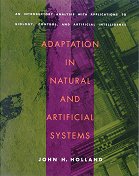If we want to construct artificial machines that rival the capabilities of biological organisms, we should try to understand the principles by which complex natural “machines” such as plants and animals are created.
It is generally agreed, at least by scientists, that all natural organisms have been “designed” by the completely blind and random process of evolution. Through evolution, a population of organisms tends to become progressively better adapted to its environment via the mutation of genomes of individuals in the population, and the selection and more rapid reproduction of the fittest organisms in that population.
Harvard professor Martin Nowak a has written a lovely and elegant book describing the mathematics of evolutionary dynamics, using the ideas of evolutionary game theory; here is a video of Nowak describing evolutionary game theory at Harvard in 2004.
My own interest is not so much in analyzing evolution, but in exploiting it. If we understand evolution so well, shouldn’t we be able to use it to design useful machines?
Of course, humans have already for many centuries exploited evolution, using artificial selection to breed domesticated animals or cultivate useful plants.
But I am looking for something else: the design of artificial machines through artificial selection. Although it has never been a mainstream idea, computer scientists have pursued such dreams since the 1950’s. When I was in graduate school in the 1980’s, I loved reading John Holland’s seminal 1975 book “Adaptation in Natural and Artificial Systems.”
Holland and his students were deeply influential in popularizing the whole field of genetic algorithms.
Another important figure in the field is John Koza, who has advocated for many years one of the most important variants of genetic algorithms, which he calls “genetic programming.” In genetic programming, computer programs, typically written in Lisp, are evolved through a process that involves mutating the programs by altering or swapping branches of the computation tree representing the program.
Genetic programming and genetic algorithms more generally, have had considerable success creating interesting and useful systems and programs. Nevertheless, I think it is fair to say that these ideas are still considered “fringe” ideas in the scientific and engineering community, and they have not widely replaced more conventional software and hardware design strategies.
So what might be missing? I will begin discussing that in Part II.




